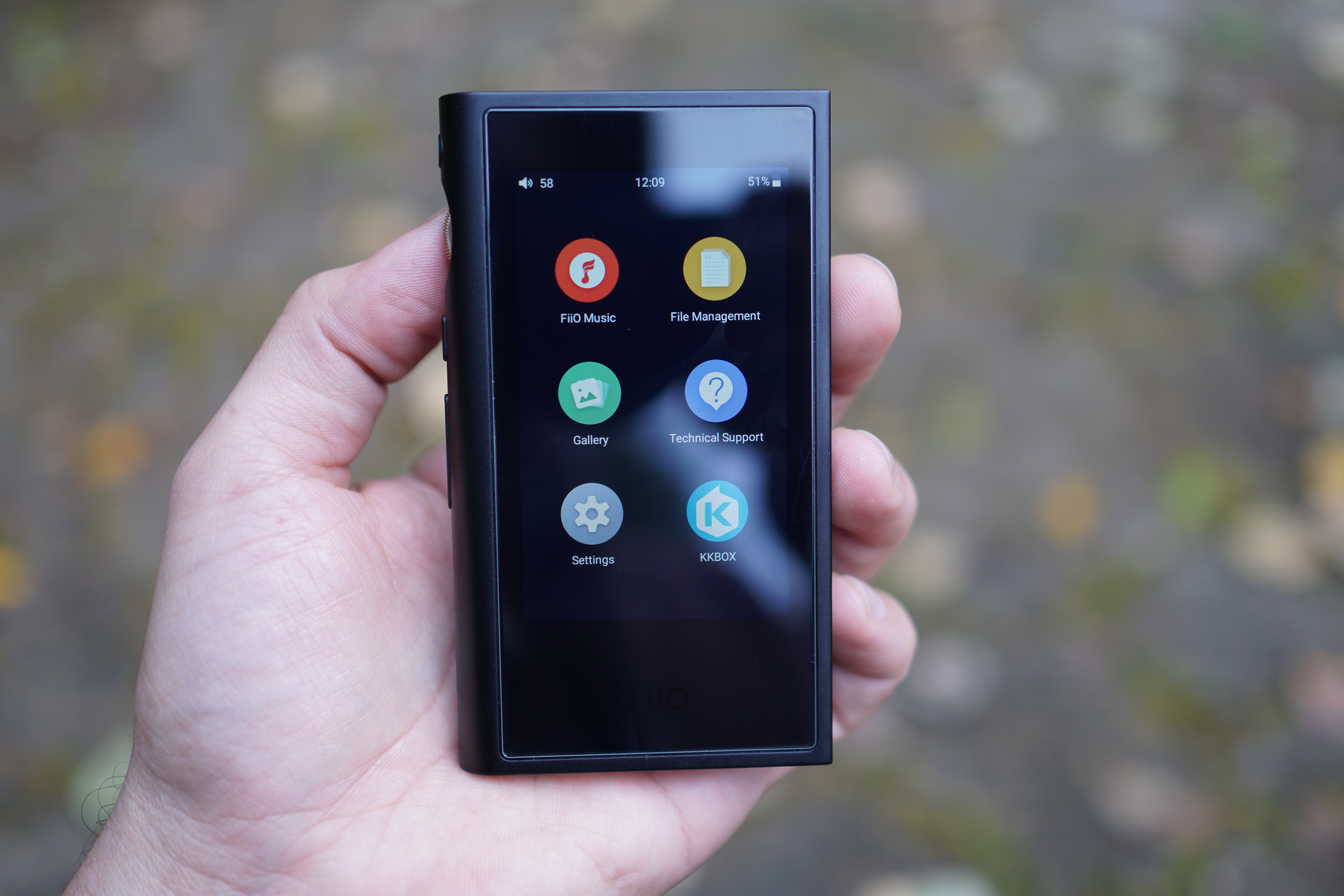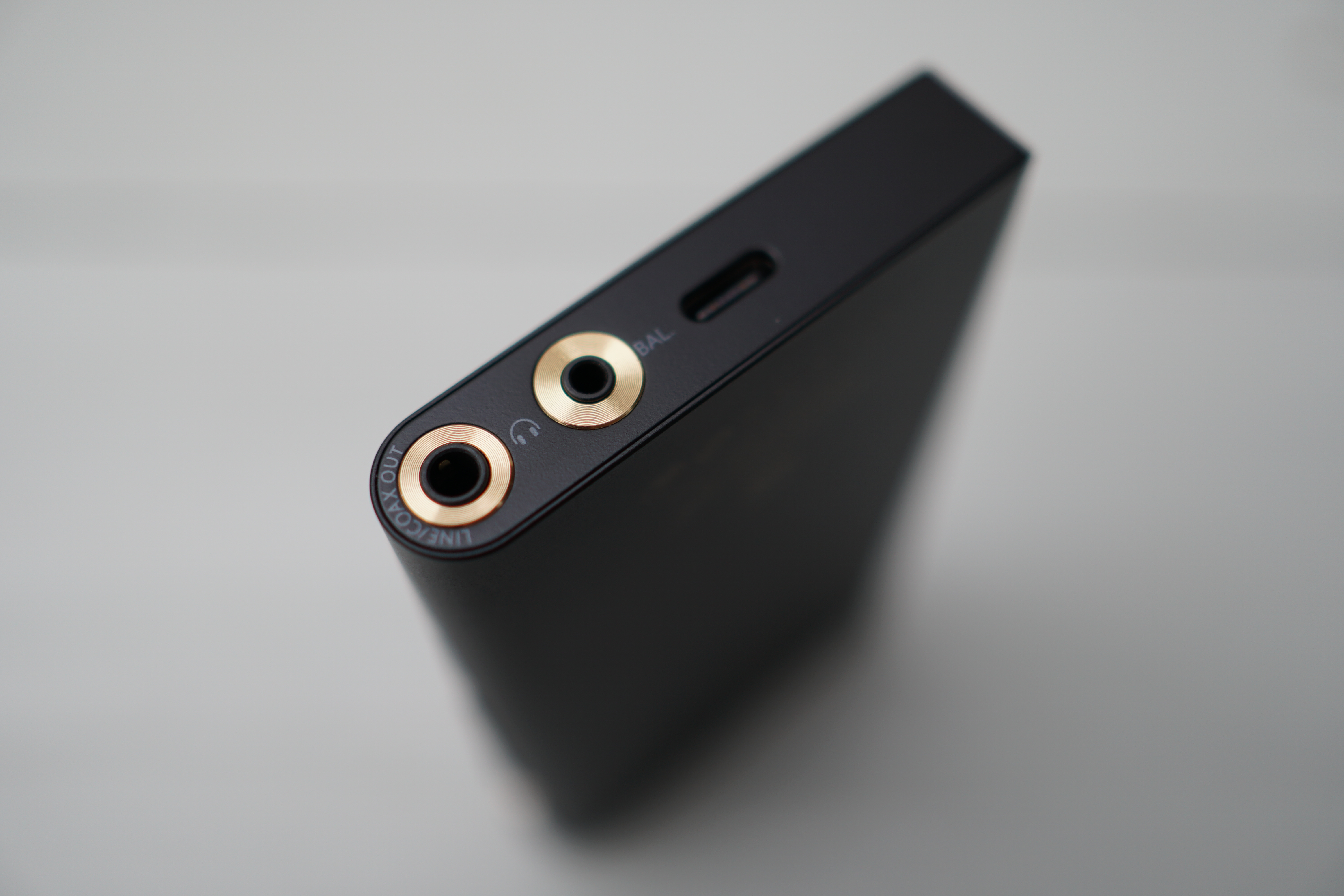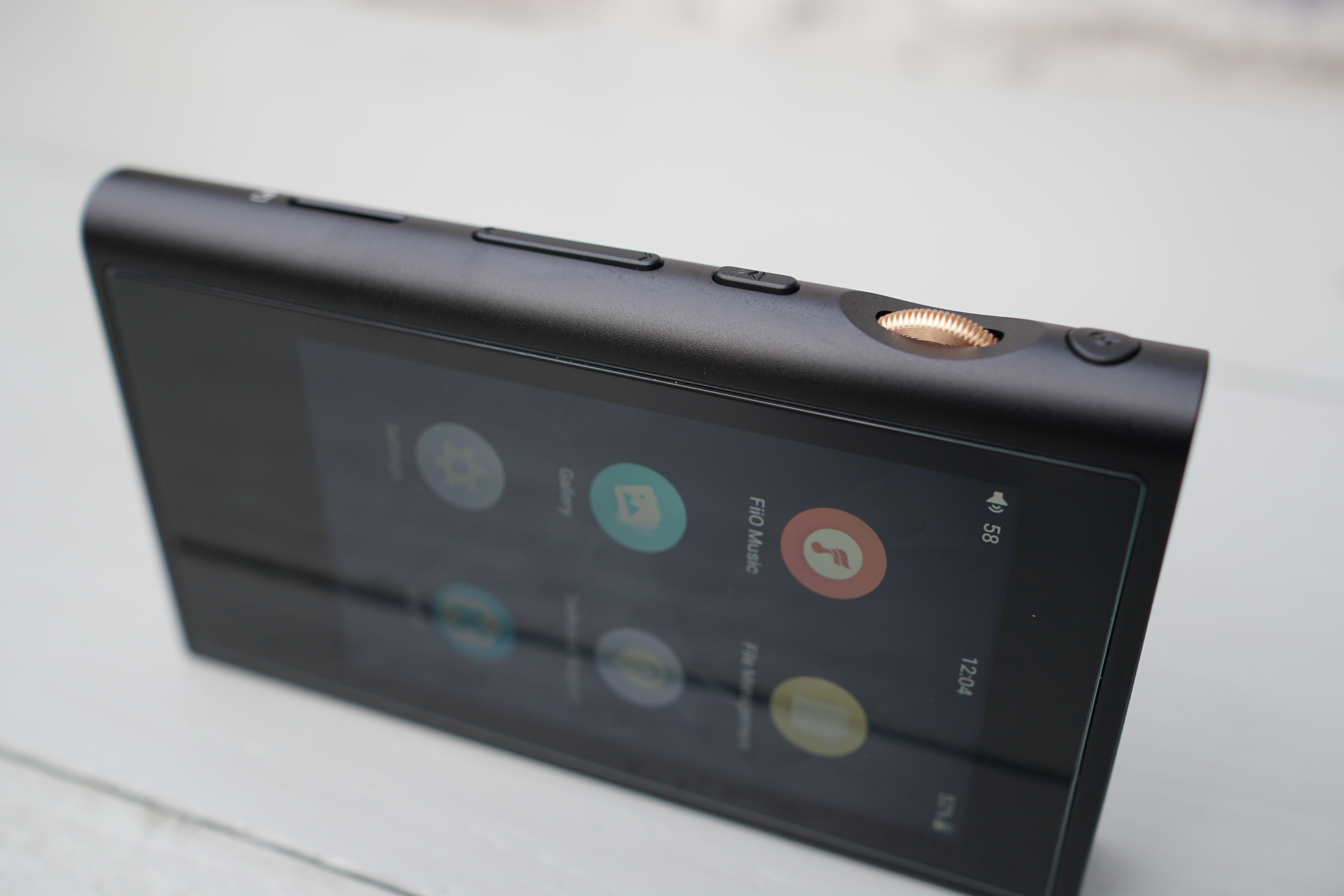Introduction
Fiio is doubling down on its "M" series of digital audio players (DAPs). Since I tried out the
fabulous M7 player, they've dropped two more - the smaller and more affordable M6 and the higher-end
M9.
Though it may not appear so, the M9 is a bit different animal to the M7 in several ways. Most notably, its audio chops are boosted with 2.5mm TRRS Balanced support and a dual-DAC solution from AKM (AK4490EN×2, to be exact), as opposed to the M7's single ESS SABRE ES9018Q2C chip. This synopsis focuses on deeper usability and audio quality details of the M9.
Disclaimer: I received this M9 review unit directly from Fiio in return for my honest opinion.
The Rundown
Cutting to the chase, the M9 polishes up the M7's entirely hard-edged facade with a uniformly rounded side and a smoother metallic finish. The two devices are definitely related, but the M9 certainly feels more premium like its extra cost would suggest. Some of it also has to due with that the screen's placement on the front isn't wonky like on the M7. Otherwise, if you don't care for look or feel of your DAP, then it's overall the same kind of deal. And the M9 remains just about as compact despite its increased feature-set.
Advantages
- Premium metal build
- Compact size
- USB-C charging/data port
- TIDAL support
- Balanced (2.5mm TRRS) output
- Skillful sound quality
Disadvantages
- Display is nothing to write home about
- Interface is a bit slow
- Volume wheel should be tighter
- Music streaming app support is limited
What it's like to use
Fiio M9’s cozy hand fit and simplistic home screen.
> In a world of huge handsets, the M9 ends up refreshing in hand. It’s not much larger than the lighter M7, which is exceptional considering the notable extras it packs.
> In a nutshell, these additions Fiio managed to stuff into this tight package are a 2.5mm TRRS port for Balanced output, dual-DAC chip and stronger amp, WiFi (with unfortunately limited streaming service support), and larger battery.
> The build is much like the M7 (smooth, matte metal unibody), but with one side rounded for a bit of eye-catching asymmetry, where all the controls reside. The finish is slippery, but thankfully Fiio ships the unit with a cleanly formed, clear silicone case. I'd recommend to keep it on, as the chassis is easy to slip the hand. The display's glass is also slightly raised above the chassis, which a lip on the case helps protect.
> Like on the M7, the play/pause button and track switcher buttons may take some getting used to avoid confusing together, since they’re similar in form and right next to each other.
> The unit’s orientation can be no longer confused via a more traditionally-placed display. Utilizing the bottom bezel with an RGB status LED is welcomed, with indicators like battery level and bitrate in-use, much like that's seen on the
BTR3.
> Fiio took a step back with the volume wheel compared to the M7. I prefer a flat edge, as this rounded form reduces surface area. It works though. My bigger gripe is that there’s still loads of play between volume
clicks, which doesn’t feel refined (I’ve complained about this in past Fiio devices but it’s never addressed). A volume wheel should be firm.
The rounded side houses all external functions, from top to bottom: power button, volume wheel, play/pause button, track switcher, and single microSD card slot.
> One annoyance that I haven’t seen yet addressed in software updates is the power button ceasing to function after the device is idle for some time. Not a big deal, you just have to wake it first with the power button first and then it’ll go back to working. Just a small oversight.
> USB-C for charging and digital audio input from another source (aka USB Audio) is in full-swing. I really appreciate how quickly Fiio keeps up with the times. On the wireless side, this includes Bluetooth audio transmission with all important HiFi codecs – aptX, aptX HD, and even Sony’s almost CD-quality LDAC.
> Gold rings around the two audio port options is a nice, premium touch that lets us know we’re dealing with a more serious HiFi player.
Bottom of device, from left to right: standard 3.5mm TRS (doubles as line-out), 2.5mm Balanced TRRS, and USB-C charging/digital out ports.
> Fiio’s software hasn’t changed much from its past bare-bones Android builds. These M-series DAPs dropped the full Android build (who knows if the X-series with full-fledged Android will return). It’s most likely for the sake of audio quality (many audio player makers make this move for tighter sonic control). But Fiio threw us a bone and by leveraging the Android base to enable a couple of streaming services, with the most important one TIDAL, as it can stream HiFi-grade tracks.
> A limitation with this Android build is that there is no Google Play Store, so you cannot install any app you want (i.e. any music streaming service). Fortunately, there is additional third-party streaming support than just what comes installed with the device, but it must be installed manually (via .apk installer). Fiio provided me the list
here, which includes many popular services like Spotify, Qobuz, Amazon Music, Deezer, and more. However, some notable services are missing, like Google Play Music (at the time of this writing).
> Navigation through the software is much like what I remember from the
M7. It’s a tad slow to react but sufficiently responsive. Same goes for the primary Fiio Music app. The layout is basic and navigation is clunky. For instance, you typically go to the home screen of the OS with a flick up from the bottom of the screen (there’s no navigation buttons in Fiio's UI), but within Fiio’s music app, that often functions as Back (sometimes a swipe from left to right works to go back, but not all the time). You’ll figure out the little nuisances and the app will work just fine, but it’s appropriate to say that Fiio’s software isn’t keeping up with its hardware progressions.
> It’s important to know (as the Balanced output suggests), that the M9 is the much better option for more power-hungry headphones. Where the top limit of the M7 is rated at 100 ohms, the M9 is 3x more at 300 ohms. Though the OS-driving Exynos SoC is the same as the M7, the audio chops are a different animal, even packing a different, dual-DAC chip.
> So does that ultimately translate to noticeably better sound quality? Indeed. The M9 is a good step up, and certainly justified at the extra $100 from the M7 (especially considering the other extra technology that I’ve discussed).
> That said, it may depend if your headphones benefit from the extra power of the Balanced port. The standard 3.5mm doesn’t have as much oomph. And as other DAPs in the past with dual-DAC setups, it may only use one of the DACs. If you only plan to use the 3.5mm port, you may want to weigh in the M7.
> The premiere impressions I get from the M9’s audio is crispness and balance. If you’ve read
my coverage on Fiio’s latest players, you’ll see how I love how Fiio has been getting excellent maintaining a refined and balance sound signature. The bass is deep (though sub-bass is a little on the light side) but not boomy or too punchy, and the other extreme is crisp but not too sparkly.
My Shure SE846 with custom Balanced cable are a superb match with the low-impedance M9, and having access to TIDAL HiFi streaming opens a huge door.
> That said, the presence of mids seem slightly pushed back in comparison to the outer extremes (so a slight U-shape to the sound signature), particularly with vocals. Though, they’re still clear, full, and open. Instruments in the region, like electric guitars, show better with larger impact and delicious detail.
> Additionally, while we’re on nit-picks, this isn’t the widest sound-stage I’ve heard. Thankfully, Fiio’s open reproduction makes the sound anything but constricted. But immersion and imaging could be better with a larger space you’ll find in many more expensive alternatives.
> Loads of detail gets resolved, especially for this price-point. But it’s far from a
reference kind of sound (Fiio certainly has evolved since the days of the original
X7). It’s a very pleasantly full/open and energetic reproduction that ensures feet tapping. This is pushed along by the excellent dynamics and separation throughout. Despite the space not being wide, you still pick up on distinguished instrument placement and clean differentiation.
> Overall a superb balance between fun and detail. In other words, you’ll get lost in the music but also have plenty to analyze if you’re that kind of listener. Most players lean one way or the other, but Fiio has manage to land its sound a sweet spot in the middle.
> On highly sensitive in-ears (such as my 9 ohm
Shure SE846 or Campfire Audio’s Andromeda), you may pick up on the slight background hiss when using the Balanced output. But it's very minimal if your ears pick it up at all.
The Gallery
Final Thoughts
The M9 is another solid audio player debut from Fiio. It does a lot for its size, and likewise, its cost. Things aren't perfect, but closer to perfection than far. I'm continually impressed with what Fiio is doing with. Something has to be said for how consistently the company has developed their audio devices as of late. I recognize similar tuning and drive to pack in the latest features from the tiny
BTR3 Bluetooth DAC to this larger M9 DAP.
But of course, there's more that Fiio should be refining in the future. Now that the hardware is down pat, software should have increased focus. There are several holes I found that need patching. Audio quality also requires a couple touch-ups to make it truly great.
As originally seen on TheSynops.com.






















